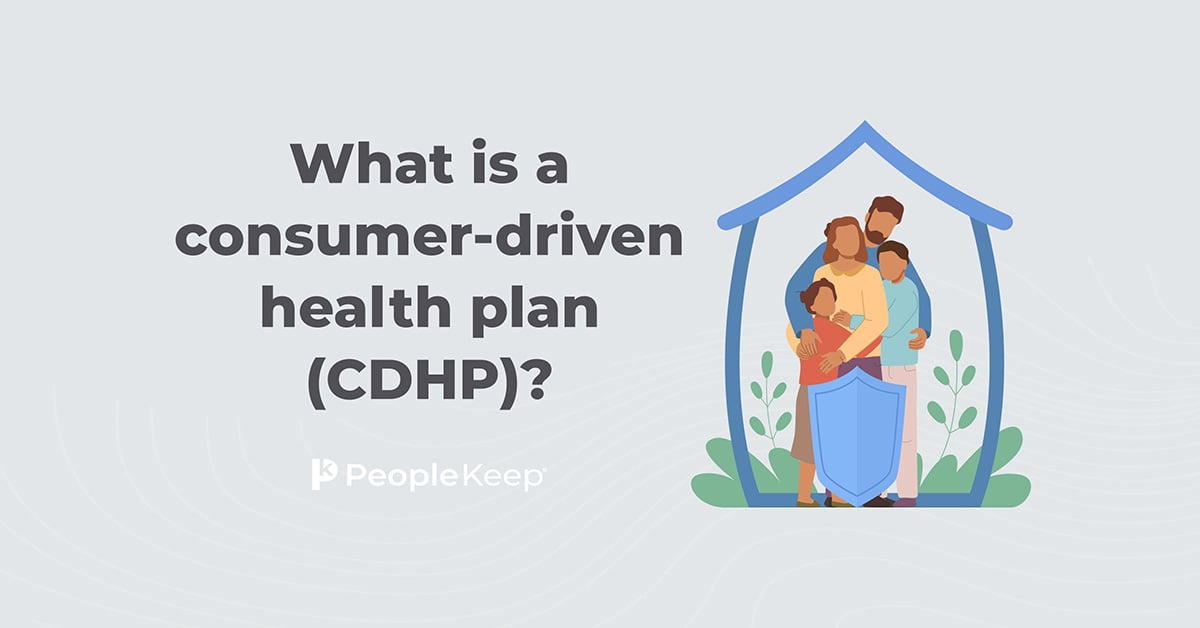New Study Suggests CDHP Participants are Healthier, Better Educated
By PeopleKeep Team on May 1, 2014 at 2:00 PM
A recent study found that participants of Consumer Driven Health Plans (CDHP) - usually consisting of Integrated HRAs or HSAs - are on average healthier, better educated, and tend to have higher incomes than participants of traditional health plans.
The study by Employee Benefit Research Institute (EBRI) analyzed participants in both CDHPs and traditional health plans consistently reported that CDHP participants tend to have a better health status and on average have a lesser likelihood for smoking habits, obesity, and lack of exercise. Today, about 26.1 million individuals with private insurance, representing 15 percent of the market, are either in a CDHP or an HSA-eligible plan.
CDHP Participants are Healthier, Better Educated
Using data from EBRI surveys going back to 2005, a new EBRI report examines the population with a CDHP and how it differs from the population with traditional health coverage. Here's what EBRI's analysis found:
-
The population of adults within CDHPs, high-deductible health plans (HDHPs), and traditional health plans was split about 50–50 between men and women in 2013.
-
In most years, CDHP enrollees were less likely than those with traditional coverage to be between the ages of 21 and 34.
-
The CDHP population were more likely to be in households with $100,000–$149,999 in income in most years of the survey.
-
CDHP enrollees were roughly twice as likely as individuals with traditional coverage to have college or post-graduate educations in nearly all years of the survey.
-
CDHP enrollees have consistently reported better health status than traditional-plan enrollees, exhibiting better health behavior than traditional-plan enrollees with respect to smoking and (except for 2010 and 2011), exercise, and sometimes obesity rates.
-
In the earlier years of the survey (2005–2009), the CDHP population was more likely than the population with traditional coverage to have that coverage through small employers (between two and 49 employees), though more recently (2010–2012), there were no statistically significant differences by employer size between the CDHP population and that of the population with traditional coverage.
-
In 2013 the CDHP population was more likely than the population with traditional coverage to have coverage through an employer with 500 or more employees
Although, the study raised questions. “It cannot be determined from the survey whether plan design had an impact on health status, smoking, exercise, or obesity rates, or whether those attributes influenced plan choice,” said Paul Fronstein, director of EBRI’s health research and education program in EBRI's press release.
The Growth of CDHPs
Health Reimbursement Arrangements (HRAs) and Health Savings Accounts (HSAs) have become a popular option for many individuals and businesses, and they continue to grow in popularity. The reason being, that individuals are able to access pre-tax dollars to use toward qualified health care expenses.
In 2013, there was an estimated $23.8 billion in HSAs and HRAs, spread across 11.8 million "accounts". The number of accounts was up slightly from 2012, when there were 11.7 million accounts. Total assets were up from $18 billion in 2012.
Check out more resources
See these related articles

What is a consumer driven health plan (CDHP)?
Looking for a healthcare plan that gives you more flexibility? Explore the concept of a consumer driven health plan (CDHP) and its advantages here.

Avvo Study Reveals Small Business Owners See Basic Legal Help as a “Big Business” Luxury
Avvo study reveals small business owners see basic legal help as a “big business” luxury. How your small business can access affordable legal help.

How to start an employer-sponsored student loan repayment program
Offering your employees student loan repayment benefits can be an attractive way to recruit job seekers thanks to rising student loan debt.


